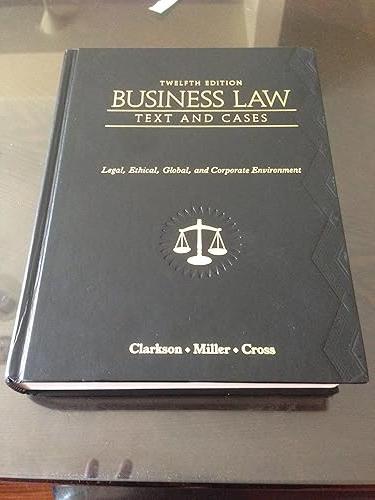Sheila White [was] the only woman working in the Maintenance of Way department at [Burlington Northern &
Question:
Sheila White [was] the only woman working in the Maintenance of Way department at [Burlington Northern & Santa Fe Railway Company’s] Tennessee Yard.
In September 1997, White complained to Burlington offi cials that her * * * supervisor, Bill Joiner, had repeatedly told her that women should not be working in the Maintenance of Way department. [ Joiner was disciplined. White was reassigned from forklift duty to “track laborer” tasks.]
* * * *
On October 10, White fi led a complaint with the Equal Employment Opportunity Commission (EEOC * * * ).
[In December, White’s supervisor, Percy Sharkey, complained to Burlington offi cials that White had been insubordinate. She was suspended without pay but reinstated after an investigation and awarded back pay for the period of the suspension. White fi led a second charge with the EEOC.]
* * * *
* * * [Later,] White fi led this Title VII action against Burlington in federal [district] court. * * *
She claimed that Burlington’s actions—(1) changing her job responsibilities, and (2) suspending her * * * without pay—amounted to unlawful retaliation in violation of Title VII. A jury found in White’s favor * * * [and] awarded her
$43,500 in * * * damages * * * .
* * * [On appeal, the U.S. Court of Appeals for the Sixth Circuit held that Title VII’s antiretaliation ban is limited to acts that adversely affect the terms, conditions, or benefi ts of employment, and] affi rmed the District Court’s judgment in White’s favor on both retaliation claims.
[Burlington appealed to the United States Supreme Court.] The language of the
[antidiscrimination] provision differs from that of the anti-retaliation provision in important ways.
The * * * words in the [antidiscrimination] provision—“hire,” “discharge,” “compensation, terms, conditions, or privileges of employment,” “employment opportunities,” and “status as an employee”—explicitly limit the scope of that provision to actions that affect employment or alter the conditions of the workplace. No such limiting words appear in the anti-retaliation provision.
* * * The two provisions differ not only in language but in purpose as well. The antidiscrimination provision seeks a workplace where individuals are not discriminated against because of their racial, ethnic, religious, or gender-based status. The antiretaliation provision seeks to secure that primary objective by preventing an employer from interfering (through retaliation) with an employee’s efforts to secure or advance enforcement of the Act’s basic guarantees. The [antidiscrimination]
provision seeks to prevent injury to individuals based on who they are, i.e., their status.
The anti-retaliation provision seeks to prevent harm to individuals based on what they do, i.e., their conduct. [Emphasis added.]
To secure the first objective, Congress did not need to prohibit anything other than employmentrelated discrimination.
But one cannot secure the second objective by focusing only upon employer actions and harm that concern employment and the workplace. * * * An employer can effectively retaliate against an employee by taking actions not directly related to his employment or by causing him harm outside the workplace. * * *
[Emphasis added.]
* * * *
* * * We conclude that * * *
the anti-retaliation provision extends beyond workplace-related or employment-related retaliatory acts * * * .
* * * *
* * * A plaintiff must show that a reasonable employee would have found the challenged action materially adverse, which in this context means it well might have dissuaded a reasonable worker from making or supporting a charge of discrimination.
* * * *
* * * [In this case,] the track labor duties were by all accounts more arduous and dirtier; * * * the forklift operator position required more qualifi cations, which is an indication of prestige; and * * * the forklift operator position was objectively considered a better job and the male employees resented White for occupying it. Based on this record, a jury could reasonably conclude that the reassignment of responsibilities would have been materially adverse to a reasonable employee.
* * * *
For these reasons, the judgment of the Court of Appeals is affirmed.
Questions:-
1. Why did the Court evaluate the language of Title VII’s antidiscrimination and antiretaliation provisions?
2. What was the Court’s interpretation of those provisions?
Step by Step Answer:

Business Law Text And Cases Legal Ethical Global And Corporate Environment
ISBN: 9780538470827
12th Edition
Authors: Kenneth W. Clarkson, Roger LeRoy Miller, Frank B. Cross





